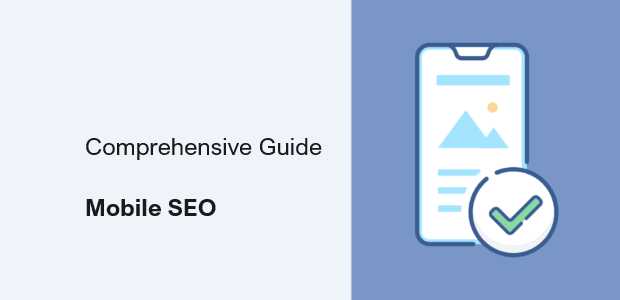A sitemap is a file that provides a map or a hierarchical representation of the pages, content, and sections of a website. It is used by search engines to crawl and index a website’s content more effectively. A sitemap typically includes information such as the URLs of web pages, when they were last updated, their importance relative to other pages on the site, and any metadata associated with the pages. By providing a sitemap, website owners can help search engines understand their site’s structure and content, and improve their website’s visibility in search engine results pages (SERPs).
In technical SEO, creating a sitemap is crucial for various reasons. Specifically, we will discuss the two primary types of sitemaps: XML and HTML sitemaps.

XML Sitemap
The XML sitemap is a file that contains a website’s crucial pages, videos, and other significant files for search engines like Google to discover during site crawling. Along with the URLs, the sitemap also includes additional information, such as the last modification date and the availability of the content in other languages.
Moreover, specific content types such as videos, photos, and news-related content can be detailed in the XML sitemap, as per the Google Developers Sitemaps section.
- In a sitemap, a video entry can indicate the video’s duration, rating, and suitability for certain age groups.
- An image entry can specify the location of images featured on a page.
- A new entry can include details such as the article title and its publishing date.
HTML Sitemap
The primary focus of an HTML sitemap is to facilitate user navigation on your website rather than Google indexing. It is a dedicated page on your site that provides links to various web pages and sometimes includes a brief description of those pages.
Although not the primary purpose of an HTML sitemap, Google suggests establishing a clear and consistent hierarchy to aid with indexation. Think of an HTML sitemap as a directory that users can use to browse your site and locate specific content. However, it is essential to note that an HTML sitemap should not replace essential pages in your site’s navigation.
Differences between XML Sitemaps and HTML Sitemaps
What are the key differences between these two types of sitemaps?
XML Sitemaps
- The intent is for Google and other bots.
- There is no hierarchy.
- Used primarily for indexing.
- You can submit via Google Webmaster Tools.
HTML Sitemaps
- The intent is for users.
- A hierarchy should be used.
- No place to submit in Google Webmaster Tools.
Why you need a Sitemap
Whether or not you require a sitemap depends on various factors. Let’s start by discussing the XML sitemap and identifying some questions you can ask to determine if you need one:
- Is your website significant enough that Google may overlook newly updated content during crawling?
- If your website is new, it may lack a substantial number of external links that can assist Google in discovering it. However, even if your site isn’t new and lacks external links, the answer to this question should still be affirmative.
- Does your website have a lot of content, such as numerous photos, videos, news articles, and so on?
- Does your website require an improved architecture to ensure that pages are well-linked to one another? This may also apply to archived or orphan pages that you wish to be indexed.
If you answered yes to any of the questions above, it is recommended to have an XML sitemap. Even if you answered no to all of them, having an XML sitemap can still be beneficial in case your site grows or expands in the future.
Now, let’s consider if an HTML sitemap is necessary for your site. Some sources may suggest that it is, while others may not. While HTML sitemaps are an older concept, they still serve a purpose. An XML sitemap provides Google with the necessary information to crawl and index pages, but it doesn’t provide a clear hierarchy like an HTML sitemap does.
Including an HTML sitemap can help Google better understand your site’s structure and relationships, especially for sites with a large number of pages. However, it is not essential and cannot fix a poorly organized website. While having an HTML sitemap is not critical for success, it is still considered a best practice due to its benefits.
My Advice
I highly suggest having both an XML and HTML sitemap since the benefits outweigh any potential downsides. Now, you might be wondering how to create these sitemaps and where to place them on your website. Let’s dive into some ways to create these files and their optimal locations on the site.
How To Create An XML Sitemap
Initially, we will discuss how to create sitemaps manually, and then we will explore some excellent tools that can help you generate them. To be considered valid, XML sitemaps must meet certain requirements.
Listed below are some specific criteria that XML sitemaps must meet:
- Begin with a <urlset> tag and end with that tag closing </urlset>.
- Include the protocol you are using within the <urlset> tag.
- Each URL entry must have a <url> tag as a parent XML tag.
- Include a <loc> child entry for each <url> parent tag.
- Each sitemap can only contain up to 50,000 URLs and 50MB.
- Must be UTF-encoded.
XML Sitemap Best Practices
Let’s examine some essential guidelines for generating XML sitemaps:
- Your sitemap should only include URLs that you want to be indexed. This means that you should exclude redirected URLs, non-canonical URLs, and pages marked as no-index.
- Do not use session Ids.
- If you have two versions (mobile and desktop) of your site, include only the primary version in your sitemap.
- Include media assets like videos, photos, and news items.
- You can use hreflang to indicate to Google that there are alternative language versions of your website.
- According to Google documentation, <lastmod> is leveraged, but only if it’s consistent and verifiable. If you cannot ensure its accuracy, it’s better to avoid using it.
- Google ignores the <priority> and <changefreq> tags at this time, according to John Mueller on this Search Off the Record podcast.
- The order in which URLs are listed in the sitemap does not determine the order in which Google crawls them, nor does it guarantee that all URLs will be indexed.
- To ensure that Google trusts your sitemap, it’s crucial to update it regularly, either automatically or manually. If you don’t keep it up to date, Google may not consider it a reliable source of information.
If you found the initial requirements overwhelming, don’t worry, as there are tools available to assist you in achieving your objectives. We’ll cover some of these tools in the later parts of this article.
How To Create An HTML Sitemap
When creating an HTML sitemap, keep in mind that its primary goal is to assist website users and provide a clear overview of your site’s hierarchy to Google.
It is important to make sure that this page is indexable by Google, rather than using a noindex tag to prevent it from being crawled.
You should also make sure that your HTML sitemap is well-organized and easy to navigate, rather than simply including a large number of links without any structure or organization, as this will not be helpful to users or search engine bots.
HTML Sitemap Best Practices
Here are some important guidelines to keep in mind while creating HTML sitemaps:
- Ensure that the structure of the HTML sitemap page is aligned with the structure of your website, making it easy to understand the hierarchy.
- The HTML sitemap should be easily accessible to the user, typically found in the footer links of the website.
- Use anchor text that is valuable to the user.
If you’re unsure how to begin, don’t worry! There are numerous tools available to assist you.
Sitemap Generator Tools
Here are a few tools that can help you generate different types of sitemaps:
Screaming Frog is a useful tool for creating sitemaps, particularly if you want to generate one after crawling your URLs. If you have less than 1,000 URLs, you can use Screaming Frog for free, but you will need to purchase a license if you have more.
XML-Sitemaps.com is a web-based application that enables you to input your website URL and generates an XML file for you. This tool is free for up to 500 URLs.
Depending on the content management system (CMS) you are using, there are numerous XML sitemap generator plugins available. However, it’s important to exercise caution, as even the best generator tools have their limitations, so it’s essential to double-check the output.
Here are some popular XML sitemap plugins for WordPress:
HTML Sitemap Generator Tools
Com: This is a free online tool that can create an HTML sitemap by scanning your website URL or uploading a document. However, as we mentioned earlier, if your site has a poor architecture, there might be more effective methods than relying on a generator.
Mobile App Development: React Native vs Native (iOS, Android)
Crawler: If you have a website with a lot of pages and are already using a web crawler such as OnCrawl, DeepCrawl, Screaming Frog, or SiteBulb, you can use the crawl data to create your HTML sitemap.
Here are some popular WordPress plugins that can be used to create HTML sitemaps:
- Simple Sitemap.
- All in One SEO (can help with both XML and HTML sitemaps).
- Companion Sitemap Generator (can also generate both XML and HTML sitemaps).
Wrap up
Sitemaps have been a part of the SEO world for a while now, aiding search engines in discovering and crawling websites. While not every website needs a sitemap, having one can be advantageous, particularly for new and large websites. I hope this guide will help you determine the appropriate next steps in creating an XML or HTML sitemap for your website, based on your site’s specific requirements. Are you looking for an expert who can manage your Sitemap and website SEO properly? CamRojud’s SEO team can help you out.
Would you like to read more about What is a Sitemap-related article? If so, we invite you to take a look at our other tech topics before you leave!







